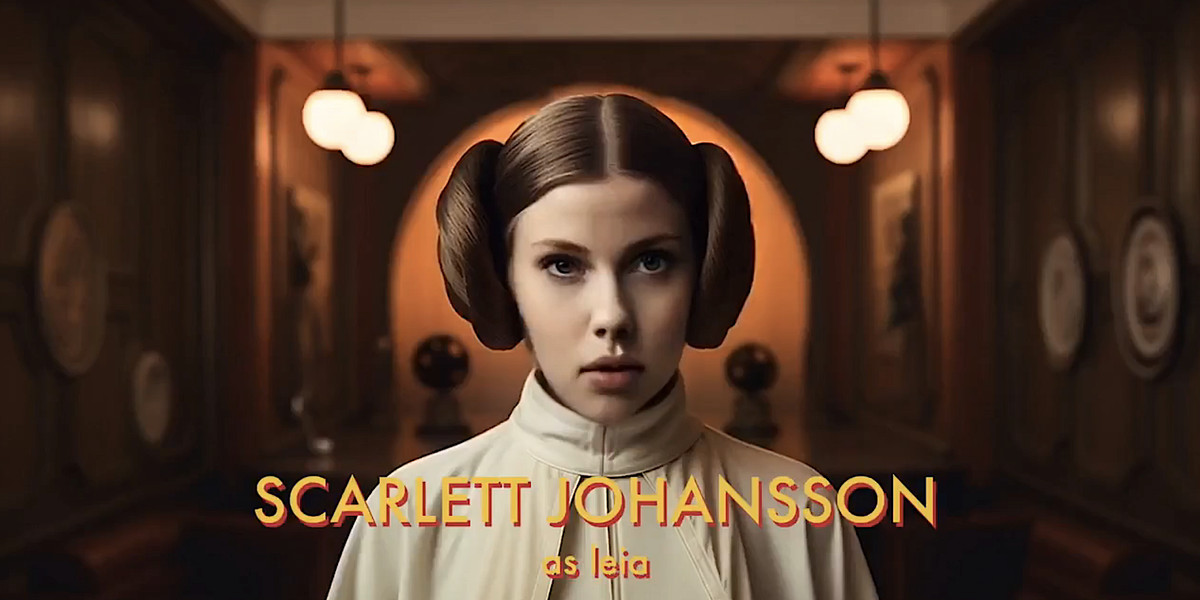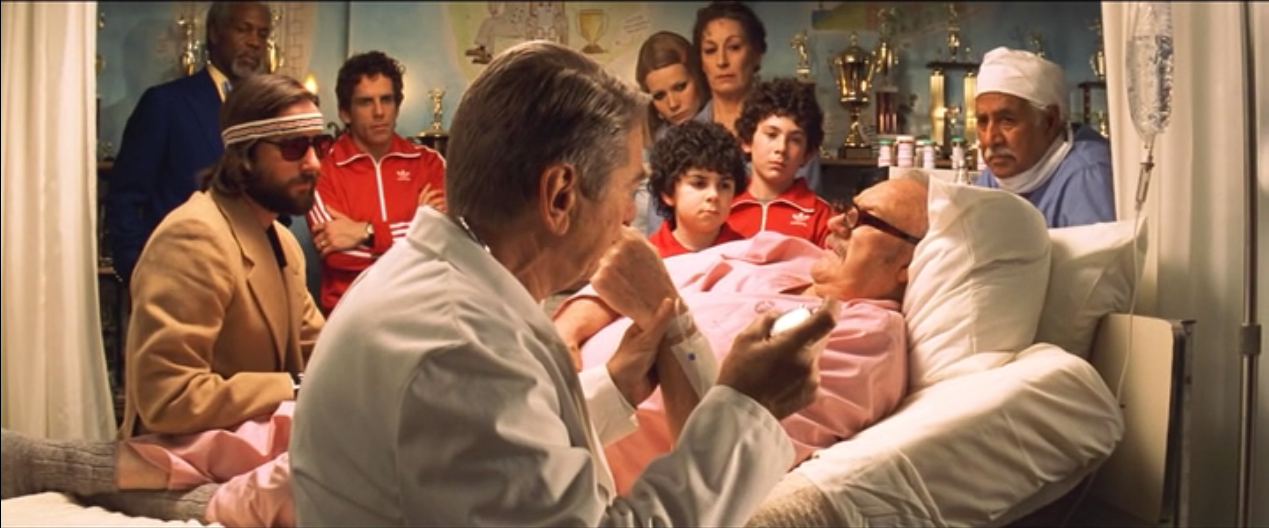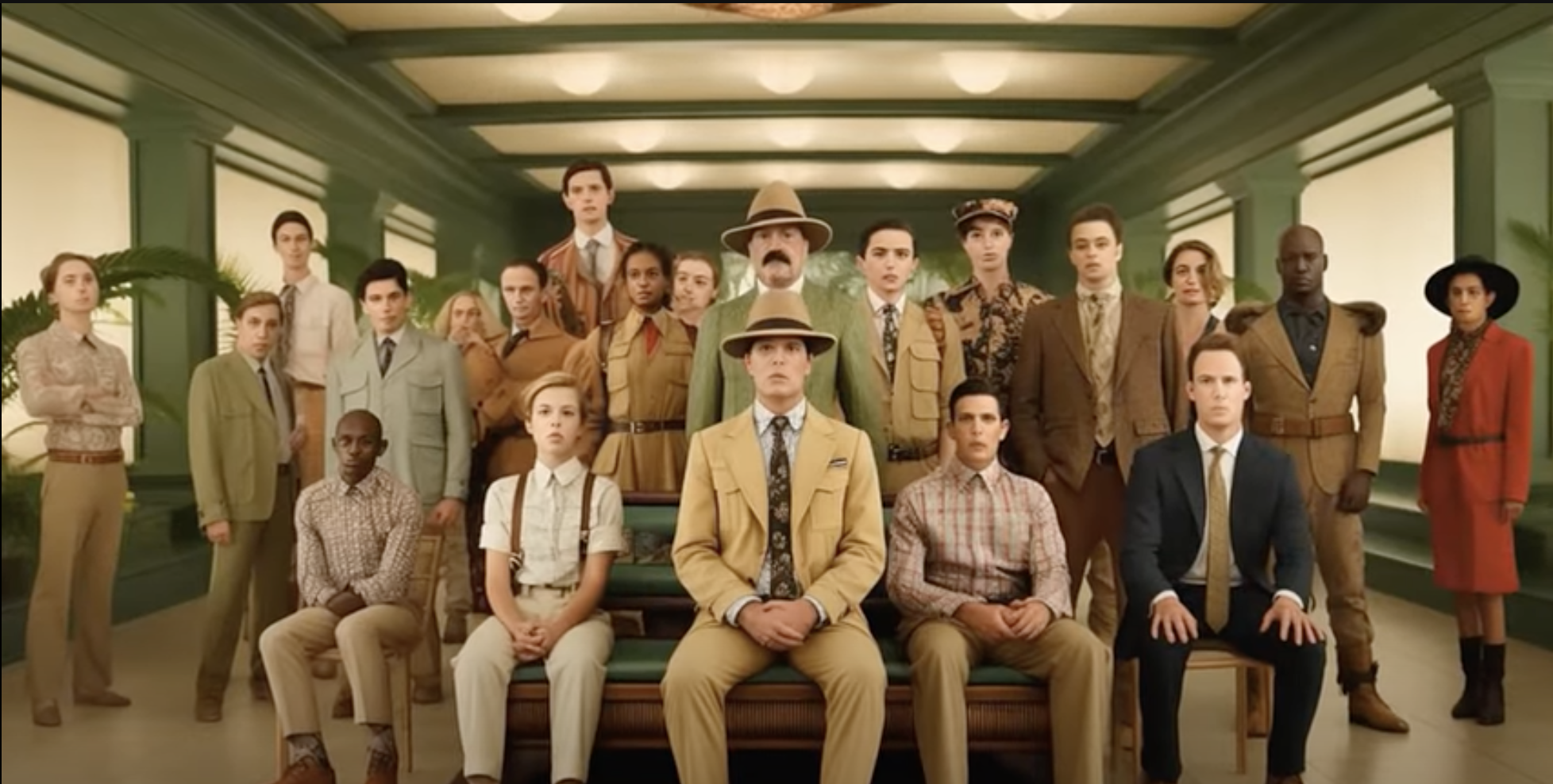The most prevalent filmmaker aped for their aesthetic appears to be Wes Anderson, likely the only director with any overly noticeable style that any of these artistically incurious tech bros have ever heard of. Anderson has a unique and inspiring style, and parodies and rip-offs of it have been ubiquitous for decades — and have seen an even larger resurgence with a recent TikTok trend. But the problems with these AI recreations — and to a far lesser extent those that are human made — are that they don’t actually capture Wes Anderson’s style, formally and especially not in content.
They are given vibrant, pastel color palettes like Anderson’s films often have, but unlike in those, where this artifice both creates a sense of time and place and acts as a mask for the characters to hide their deep-rooted sadness, the color palettes in the recreations don’t have any meaning. Every image looks the same and doesn’t say anything about character, story, or mood.
The most maddening example of how badly the AI misunderstands Anderson’s work is how it appears to be trained to know Wes Anderson likes to use symmetry in his shot composition but nothing else. It doesn’t understand the precision with which Anderson moves the camera for dramatic and comedic purposes. It doesn’t understand how Anderson uses extra space on the edge of the frame to add details to create a more lived-in world. It doesn’t understand how Anderson blocks his actors to help you understand character dynamics and personalities. Look at the following two images, one a shot of most of the ensemble from “The Royal Tenenbaums” and the other a group shot from an AI’s interpretation of “Jurassic Park” by Wes Anderson.
Apart from generally looking terrible — with people who look like their faces are melting and a non-descript background — the AI image has its characters standing symmetrically in a vast room without any thought given to their relative positioning or poses. There is no information about the world or these characters.
Contrast that with the frame from “The Royal Tenenbaums.” Here, the family is split in the image by the fake doctor Royal has hired to give him a false diagnosis. Those on the left, more distant from Royal, are the least trusting of him in that given moment. This is particularly true of Chas and Henry, who stand defensively in the back of the frame. Richie sits close to him, trying more than the other two to reconnect with Royal, but they still don’t understand each other yet. On the right of the doctor are Ari and Uzi, Chas’s two children who have no reason not to trust their grandfather at this point and who will become close with him by the end of the film. Etheline is also there, giving Royal the benefit of the doubt because she thinks he’s dying but keeping her distance by standing in the back. Margot has no relationship with her father but stands behind her mother as a protector. And Pagoda, Royal’s loyal right-hand man stands behind him, always having his back. This single shot conveys information about nine different characters and their relationship to the man in the center, and all AI can do is position the characters to make the image look symmetrical.
Wes Anderson films without Wes Anderson are just shallow, lifeless husks of better films — ones that say something, ask questions, and push boundaries. Art can be aided by technology, but human touch makes it special because it is an expression of who we are. AI “art” isn’t expression, it’s copying. Not in a plagiaristic sense, but in the sense that it can never create anything new. The nature of the technology means everything it spits out will have come from something before and algorithmically determined to be the most appealing. There’s no risk in that, no excitement. It’s what Wes Anderson's films have never been: boring.





